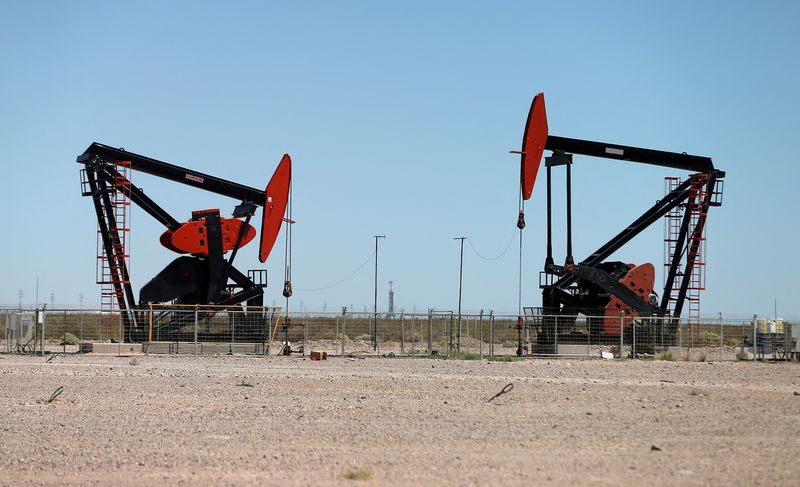By Nicole Jao
NEW YORK (Reuters) -Oil prices fell on Friday, posting a weekly loss, as investors awaited an OPEC+ meeting on Sunday that will decide the fate of the producer group’s output cuts.
Futures for July deliveries fell 24 cents, or 0.3%, to $81.62 a barrel, while the more liquid August contract fell 77 cents, or 0.8%, to $81.11. U.S. West Texas Intermediate (WTI) crude futures fell 92 cents, or 1.2%, to $76.99.
For the week, Brent settled for a loss of 0.6%, while WTI recorded a loss of 1%.
“It’s the tension ahead of next weekend’s OPEC meeting,” said Matt Smith, chief analyst at Kpler, referring to the potential for the group to do something unexpected. “It is widely expected that they will roll over the cuts,” he added.
Markets are awaiting Sunday’s OPEC+ meeting, with the producer group working on a complex deal that would allow the country to extend some of its deep oil production cuts until 2025, sources told Reuters.
Saudi Arabia invited ministers to meet in person in Riyadh for the June meeting, in a last-minute change of plans, sources said on Friday. The meeting is still officially scheduled as an online meeting.
Output rose to the highest level this year in March, U.S. Energy Information Administration (EIA) data showed Friday, while supply of fuel products, a measure of demand, fell 0.4% to 19.9 million barrels per day.
The oil market has been under pressure in recent weeks on the prospect that U.S. borrowing costs would remain higher for longer, which will limit financial resources and could limit oil demand.
Both oil benchmarks were on track for their biggest monthly declines since December, after falling in the previous session on a surprise rise in U.S. fuel inventories.
“The U.S. summer travel season kicked off over Memorial Day weekend, with early indications of strong driving and flying activity – but fuel consumption appears to be more subdued, implying efficiency gains,” Citi analysts wrote in a note.
Oil prices rose shortly after US government data showed inflation moved sideways in April, boosting traders’ expectations that the Fed would deliver a long-awaited interest rate cut in September.
Inflation in the eurozone rose more than expected in May, Eurostat data show. The increase is unlikely to stop the European Central Bank from cutting borrowing costs next week, but it could slow the cycle of rate cuts.
US energy companies kept the number of oil and gas installations – an early indicator of future production – steady at 600 in the week to May 31, energy services firm Baker Hughes said in its closely watched report on Friday.
The number of oil platforms fell by one in 496 this week, while the number of gas platforms increased by one in 100.

However, the total number of rigs fell for the third month in a row in May, falling by 13, the most in a month since August.
Money managers increased their net long positions in US crude futures and options in the week to May 28, the US Commodity Futures Trading Commission (CFTC) said on Friday.


